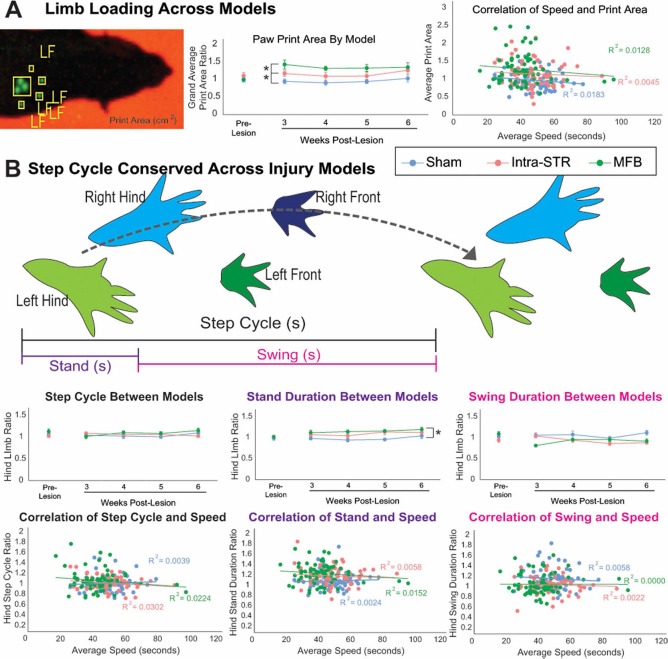Figure 3.

The 6-OHDA lesion alters proportion of step cycle spent in stand phase. (A) Left: Image of left front paw print taken from the CatWalk software. Middle: Ratio of hindpaw (left or lesioned side/right or unlesioned side) print area is different between types of lesion, indicating a change in limb loading. Right: Print area does not correlate with speed of crossing the apparatus. (B) Schematic of step cycle made up of the stand (paw contact with glass) and swing (paw not in contact with glass) phases. Step cycle as a whole did not change in both the lesion and sham groups. 6-OHDA, 6-hydroxydopamine; Intra-STR, group with injections of 6-OHDA in the striatum; MFB, medial forebrain bundle/group with injections of 6-OHDA in the medial forebrain bundle; LF, left front paw.
